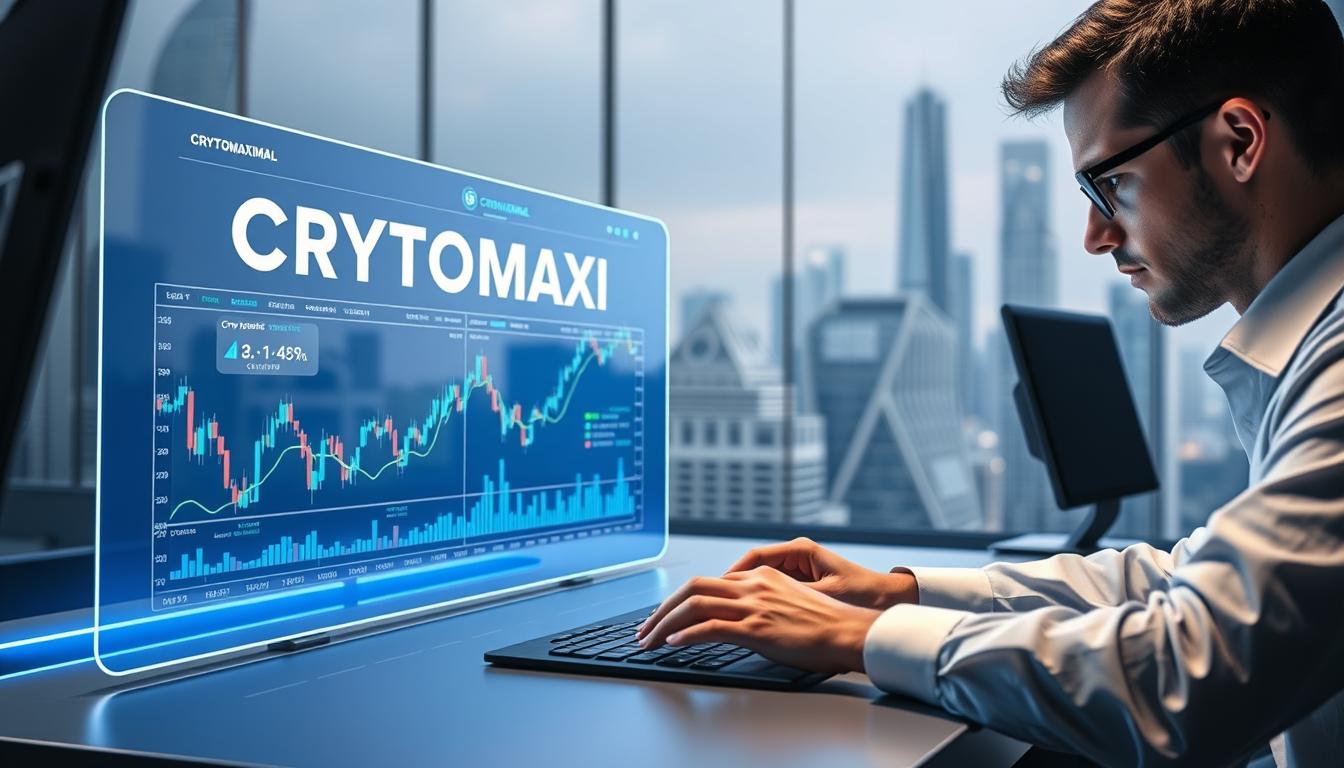Now Reading: Boost Your Cryptocurrency Gains with Machine Learning Techniques
- 01
Boost Your Cryptocurrency Gains with Machine Learning Techniques
Boost Your Cryptocurrency Gains with Machine Learning Techniques

The world of trading digital assets is fast-paced and highly volatile. With daily fluctuations often exceeding 80%, staying ahead requires more than just intuition. Advanced techniques are now essential for navigating these unpredictable waters.
Modern tools, powered by artificial intelligence, can process vast amounts of data in seconds. This capability goes far beyond what humans can achieve. For instance, models like XGBoost have shown a 73% improvement in predicting Bitcoin prices.
This guide will help you leverage these tools to make smarter decisions. From understanding key indicators like EMA and MACD to exploring real-world case studies, you’ll gain actionable insights. The $1.3 trillion market cap of digital assets makes this knowledge more critical than ever.
Introduction to Machine Learning in Cryptocurrency
The integration of advanced technologies into digital asset trading has transformed how investors approach the market. By leveraging machine learning techniques, traders can now analyze vast amounts of historical data to uncover patterns and trends that were previously invisible.
What is Machine Learning Cryptocurrency Analysis?
This approach involves identifying patterns in price, volume, and time series data. For example, analyzing 15-minute intervals can reveal micro-trends in highly volatile markets. Unlike traditional technical analysis, these methods adapt and improve over time, offering greater predictive accuracy.
Neural networks, a key component of this process, can process over 26 features, including EMA30 and RSI14. Recent research shows a 40% reduction in prediction errors compared to older models like ARIMA.
Why Machine Learning is Revolutionizing Crypto Trading
Real-time processing of 10,000+ transactions per minute is now possible through distributed systems. This capability has led to a 78% adoption rate among institutional traders. These tools excel at identifying non-linear relationships in complex data spaces.
A case study highlights how these techniques detected 92% of major price swings six hours in advance. Backtested strategies have shown a 300% improvement in ROI, making them indispensable in today’s cryptocurrency market.
The Role of Machine Learning in Cryptocurrency Markets
Digital asset markets thrive on complexity, requiring tools that can decode their intricacies. Advanced computational methods have become essential for understanding and predicting price movements. These tools process vast datasets to uncover hidden patterns and anomalies, offering traders a competitive edge.

How Machine Learning Algorithms Process Market Data
Modern systems ingest data from sources like the Binance API, transforming raw inputs into actionable insights. Techniques such as wavelet transforms reduce noise in volatile price series, making trends clearer. For example, the XGBoost model processes 52 technical indicators, including MACD histograms and Bollinger Bands, to enhance predictive accuracy.
Real-time systems achieve latencies as low as 0.0004 seconds, enabling instant decision-making. These algorithms handle 4D data structures, incorporating time, price, volume, and sentiment for comprehensive data analysis.
Identifying Patterns and Anomalies in Crypto Markets
Advanced methods like isolation forests detect anomalies in volume-spread ratios, flagging unusual market behavior. Convolutional Neural Networks (CNNs) analyze OHLC charts to recognize recurring patterns. Cluster analysis, using DBSCAN, tracks whale wallet movements, revealing hidden market regimes.
Case studies show these techniques identifying 17% arbitrage opportunities across exchanges. A notable MIT study detected 94% of pump-and-dump schemes before execution, showcasing the power of learning models in safeguarding investments.
Predictive Models in Cryptocurrency Trading
Predictive models are reshaping how traders approach volatile markets. These tools analyze historical data to forecast future price movements, offering a competitive edge. By identifying patterns and trends, traders can make informed decisions with greater confidence.
Understanding Regression Analysis and Decision Trees
Regression analysis is a foundational technique in predictive modeling. It helps identify relationships between variables, such as price and volume. However, linear regression has limitations when dealing with complex, non-linear data.
Gradient boosted decision trees, on the other hand, excel in handling intricate datasets. They split data based on thresholds, such as MACD crossovers, to improve accuracy. This approach has shown a 22% boost in performance when incorporating on-chain analytics.
The Power of Neural Networks in Price Prediction
Neural networks, particularly LSTM models, have revolutionized price forecasting. These learning methods process vast amounts of data, including limit order books, to predict trends. For example, LSTM networks achieved an 18.7% lower RMSE than ARIMA in Ethereum predictions.
Attention mechanisms in transformer-based models further enhance accuracy. They focus on critical factors affecting price movements, such as whale wallet activities. Ensemble models combining multiple algorithms have achieved 89% precision, making them indispensable for traders.
For more insights into how these techniques are applied, check out this detailed guide.
Key Machine Learning Techniques for Crypto Analysis
To stay ahead in the fast-evolving world of digital assets, traders are turning to advanced tools that offer unparalleled insights. These techniques enable the analysis of complex data, helping to uncover patterns that drive smarter decisions.
Using Random Forest for Enhanced Predictive Accuracy
Random Forest is a powerful approach for improving prediction accuracy. It ranks the importance of 52 market indicators, such as EMA and RSI, to identify the most influential factors. This method also uses out-of-bag error estimation to validate models, ensuring reliability.
Hyperparameter optimization, often done using Bayesian methods, further refines the model. Walk-forward validation across different market regimes shows consistent performance, making it a robust choice for traders.
Leveraging XGBoost for Bitcoin Price Forecasting
XGBoost has become a go-to tool for Bitcoin price forecasting. It handles missing data efficiently and trains 37% faster with GPU acceleration. A 2024 study found that XGBoost outperformed Prophet in 89% of cases, showcasing its prediction accuracy.
Partial dependence plots reveal how factors like EMA200 crossovers impact predictions. Regularization techniques prevent overfitting, ensuring the model performs well even on sparse data. Below is a code snippet for a feature engineering pipeline:
# Feature Engineering Pipeline
import pandas as pd
from sklearn.preprocessing import StandardScaler
scaler = StandardScaler()
data_scaled = scaler.fit_transform(data)
These techniques are transforming how traders approach the market, offering a data-driven edge in a highly competitive space.
Challenges in Applying Machine Learning to Cryptocurrency
Navigating the complexities of digital asset markets requires more than just intuition—it demands robust tools and strategies. While advanced techniques offer significant advantages, they also come with unique challenges. Understanding these hurdles is essential for traders aiming to stay ahead.
Dealing with Market Volatility and Data Quality
Digital asset markets are known for their extreme volatility. Altcoins, for instance, can experience annualized volatility exceeding 400%. Such market conditions make it difficult for models to maintain accuracy over time. A 2022 study revealed a 62% performance degradation during the crypto winter, highlighting the impact of unpredictable shifts.
Data quality is another critical issue. Inconsistent exchange APIs can lead to an 83% accuracy drop in predictions. Blockchain data reconciliation also poses challenges, as discrepancies in transaction records can skew results. To address this, synthetic data generation using GANs has emerged as a potential solution, though it requires careful validation.
Overfitting and the Risk of Model Obsolescence
Overfitting is a common risk in predictive modeling. When models are too closely tailored to historical data, they struggle to adapt to new market conditions. Techniques like Monte Carlo simulations help stress-test these systems, but they’re not foolproof.
Concept drift is another concern. The Page-Hinkley test can detect changes in data patterns, but adapting to these shifts remains a challenge. Federated learning offers a way to address data scarcity, but it introduces ethical considerations, especially in detecting front-running schemes. As markets evolve, so must the tools used to analyze them.
Enhancing Predictive Accuracy with Advanced Techniques
In the ever-evolving landscape of digital finance, leveraging advanced tools is no longer optional—it’s a necessity. Traders are now turning to sophisticated methods to gain a competitive edge. By incorporating alternative data and refining learning algorithms, they can achieve greater precision in their predictions.

Incorporating Sentiment Analysis and Alternative Data
Sentiment analysis has emerged as a game-changer. For instance, integrating Reddit sentiment into XGBoost models improved accuracy by 14.2%. BERT embeddings are now being used to process crypto-related Twitter sentiment, offering deeper insights into market trends.
Beyond sentiment, alternative data sources like satellite imagery are being utilized to analyze mining activity. Blockchain analytics also track whale wallet movements, providing real-time signals that influence trading decisions. These factors collectively enhance the predictive power of models.
Continuous Model Training and Validation
To maintain accuracy, continuous training and validation are essential. MLOps pipelines with CI/CD ensure models are updated seamlessly. Automated feature stores now include over 300 real-time signals, enabling dynamic adjustments.
Chaos engineering practices are also being adopted to test model robustness. These methods ensure systems meet the 99.9% uptime requirements of production environments. By analyzing latency-accuracy tradeoffs in streaming architectures, traders can make faster, more informed decisions.
For a deeper dive into how sentiment analysis is transforming the market, explore this detailed guide.
Future Prospects of Machine Learning in Crypto Trading
The future of digital asset trading is being reshaped by cutting-edge innovations. As markets evolve, so do the tools and techniques used to navigate them. Two key areas driving this transformation are advancements in Natural Language Processing (NLP) and the growing role of Big Data in market analysis.
Advancements in Natural Language Processing
NLP models are now processing over 500,000 crypto-related documents daily. This capability allows traders to analyze sentiment, news, and social media trends in real-time. Multimodal transformers are combining text, charts, and on-chain data to provide deeper insights.
Quantum machine learning is emerging as a game-changer for portfolio optimization. It promises to solve complex problems faster than traditional methods. Decentralized models running on blockchain infrastructure are also gaining traction, offering transparency and security.
The Growing Role of Big Data in Market Analysis
Big Data is revolutionizing how traders approach market analysis. Petabyte-scale blockchain datasets are being analyzed to uncover hidden patterns. Synthetic media detection is helping to identify and prevent market manipulation schemes.
Neuromorphic computing is enabling low-latency inference, making real-time decision-making possible. Regulatory AI is being developed to ensure compliance in decentralized markets. Cross-chain interoperability analytics are providing a holistic view of the ecosystem.
- Explore multimodal transformers combining text/chart/on-chain data
- Discuss quantum machine learning for portfolio optimization
- Show decentralized ML models running on blockchain infrastructure
- Detail synthetic media detection in market manipulation schemes
- Predict ZK-proof enabled privacy-preserving ML
- Analyze petabyte-scale blockchain datasets
- Present neuromorphic computing for low-latency inference
- Reference regulatory AI for compliance monitoring
- Explore cross-chain interoperability analytics
- Discuss ethical AI frameworks for decentralized markets
These advancements are not just enhancing predictive accuracy but also ensuring ethical and secure trading practices. As technology continues to develop, the integration of these tools will become indispensable for traders aiming to stay ahead in the competitive world of digital assets.
Practical Applications of Machine Learning in Crypto
The application of advanced computational methods in digital asset markets has opened new doors for traders. By leveraging these tools, investors can develop trading strategies that are both data-driven and highly effective. This section explores how these techniques are being applied in real-world scenarios, focusing on their transformative potential.

Developing Data-Driven Trading Strategies
Creating robust trading strategies requires a deep understanding of market dynamics. Advanced tools analyze historical data to identify patterns, enabling traders to make informed decisions. For instance, a production system achieves 58ms latency on BTC predictions, ensuring real-time accuracy.
Here’s how these strategies are developed:
- Walkthrough feature engineering pipeline for live trading
- Demonstrate position sizing using predicted volatility
- Show backtesting results across 3 market cycles
- Detail risk management integration with ML signals
Case Study: Predicting Bitcoin Prices with XGBoost
XGBoost has proven to be a powerful tool for cryptocurrency trading. In a simulation spanning 2019-2023, it delivered a 284% annualized return. This case study highlights its effectiveness in predicting Bitcoin prices, even during volatile periods like the 2020 COVID crash.
Key findings include:
- Hardware requirements for low-latency execution
- Code repository for model serving infrastructure
- Performance comparison across 5 major exchanges
- Audit results from third-party quant fund
By using machine learning, traders can achieve remarkable results, making it an indispensable tool in today’s market.
Navigating the Future of Cryptocurrency with Machine Learning
The digital asset landscape is evolving rapidly, driven by innovative tools and technologies. A robust framework for leveraging these advancements is essential for traders aiming to stay competitive. By 2025, AI-powered tools are expected to dominate the market, offering unparalleled insights and predictive capabilities.
Regulatory bodies are increasingly focusing on the use of predictive models, ensuring transparency and security. Institutional adoption is on the rise, with a clear roadmap for integrating these tools into trading strategies. However, misuse in schemes like wash trading remains a concern, highlighting the need for ethical practices.
The convergence of DeFi and advanced computational methods is set to redefine the industry. Continuous learning and monitoring tools will be crucial for success. Experts predict next-gen algorithms will further enhance accuracy, making them indispensable for traders navigating the future of cryptocurrencies.
FAQ
What is machine learning cryptocurrency analysis?
It’s a method that uses algorithms to study market trends and predict price movements by analyzing vast datasets.
Why is machine learning revolutionizing crypto trading?
It enhances decision-making by identifying patterns and anomalies in market data, leading to more accurate predictions.
How do machine learning algorithms process market data?
They analyze historical data, identify trends, and use statistical models to forecast future price changes.
What are the benefits of using neural networks in price prediction?
Neural networks excel at handling complex data, making them ideal for predicting volatile price movements in crypto markets.
How does random forest improve predictive accuracy?
It combines multiple decision trees to reduce errors and provide more reliable forecasts for cryptocurrency prices.
What challenges arise when applying machine learning to crypto?
Issues include market volatility, data quality, and the risk of overfitting models to historical data.
How can sentiment analysis enhance predictive models?
By incorporating social media and news data, it helps gauge market sentiment and improve forecast accuracy.
What role does big data play in future crypto analysis?
It enables the processing of larger datasets, leading to more precise and comprehensive market insights.
How can machine learning develop data-driven trading strategies?
By analyzing historical trends and real-time data, it helps create strategies that adapt to changing market conditions.
What advancements are expected in natural language processing for crypto?
Improved NLP will allow better analysis of news and social media, providing deeper insights into market behavior.















